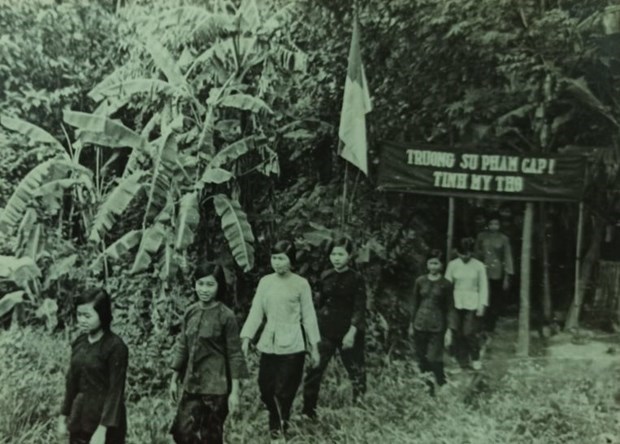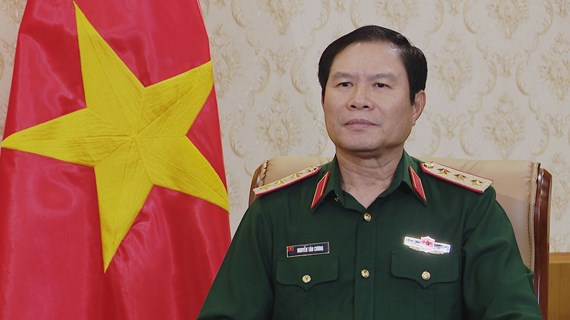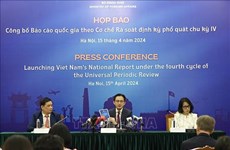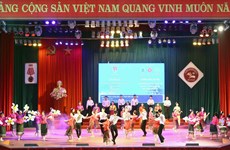Wartime classes and creative ways to keep education going in the South
 The pedagogical college in My Tho province during the anti-US resistance war (Photo courtesy of characters in the story)
The pedagogical college in My Tho province during the anti-US resistance war (Photo courtesy of characters in the story)Hanoi, (VNA) – During the wartime, revolutionary teachers and educational officials found many creative ways to keep educational activities going despite the almost zero infrastructure: no schools, no students and no textbooks.
The organisation of educational activities during the war met with countless difficulties, from a lack of teachers, textbooks, classrooms, to a lack of students. Teachers had to go from house to house to encourage children to go to school.
Organising a class from zero
Teacher Do Trong Van, a former staff member of the Education Section under the Central Committee of the People's Revolutionary Party, recalled that teachers were mobilised from three sources, namely those coming from the North, teachers in schools in the South who engaged in the revolution, and those who were trained on the spot. From 1962 to 1975, nearly 3,000 teachers from the North were sent to help with educational cause in the South. They were all selected among those who had high qualifications and good teaching skills at schools in the North.
However, teachers who received on-the-spot training had lower qualifications, receiving training for only three or four months in order to teach classes at primary and secondary levels. An example was the Kien Tuong pedagogical college under the Education Section of Zone 8. It recruited all 30 new female soldiers of a unit for training, including some who were illiterate. Under the motto of “teaching what you know,” students studied in the morning and in the afternoon they taught others what they had just learnt. In this way, those students later became the core elements in education activities in the region.
 Teachers and learners of a class during the anti-US war
Teachers and learners of a class during the anti-US warNot only teachers, teaching and learning materials were also seriously lacking. Most teachers from the north brought with them large amounts of textbooks when departing for the south, but the harsh conditions on the road forced them to leave the books behind.
Therefore, teachers in the south had to compile textbooks by themselves. Textbooks were so rare that even the entire province had only one textbook, and teachers and students had to make handwritten copies.
Teacher Tran Thu Nguyen recalled that he was assigned to compile history textbooks despite the fact that he was trained in natural sciences. “Now I cannot recall how I had done to complete the task,” he said.
An even more difficult task was to bring students to class. In liberated areas, teachers had to go from house to house to encourage children to go to school.
Nguyen, who was an educational official of the Education Section of Zone 8, said he would never forget the days when he travelled by a basket boat to every corner in the Mekong Delta to persuade children to go to school.
“Sometimes when we arrived at a student’s house, he already went fishing with his parents. But we kept coming and coming, so finally the parents sent their children to class,” Nguyen said.
 Students at Binh Thanh school compare homework before class begins
Students at Binh Thanh school compare homework before class beginsClass keeps moving to avoid enemy’s raids
In areas still under enemy’s occupation, classes were held in temporary venues which kept changing to avoid enemy’s raids. Teachers were also soldiers, ready to pick up their guns to fight. Hundreds of teachers had died in battles.
Dinh Le Ha was only 17 when she was selected for a teachers’ training course. Her classroom in Kien Phong was built from bamboo. “Whenever there was a raid, we put our notebooks in an ammunition case, wrapped it tightly and hid it under water, in the river. We ourselves fled to a lagoon,” Ha, now 69 years old, recalled.
She told us that the most memorable raid for her was in 1969, when she and other teachers together with their students had to flee to Kampong Cham in Cambodia. “We divided the students into small groups and each teacher was in charge of several students. At first the students could walk by themselves, but later they were too tired so we had to take turn carrying them on our backs,” Ha recalled.
 Teachers and students at the Zone 8 Pedagogical College in 1975
Teachers and students at the Zone 8 Pedagogical College in 1975During the fierce war, many teachers had died. Recalling the eight teachers who together with her were sent to work in Quang Da province in 1965, teacher Bui Thi Nguyen said four were killed in battles, one was caught by the enemy and sent to Con Dao prison, and three others were injured. In the list of fallen soldiers of the educational sector carved on a memorial stele in Tay Ninh province, there were more than 600 teachers, with over 100 sent from the north./.













